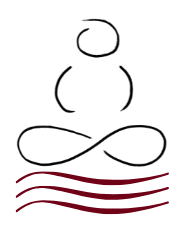 Very early in life we learn the concepts of me and mine. As children, we start to develop this sense of self by coming into awareness of our body as separate from other bodies, that we have control over our limbs, and that there is power in our voices to make things happen. Our cries bring mommy and what we do with our hands has consequences.
Very early in life we learn the concepts of me and mine. As children, we start to develop this sense of self by coming into awareness of our body as separate from other bodies, that we have control over our limbs, and that there is power in our voices to make things happen. Our cries bring mommy and what we do with our hands has consequences.
Soon after, we understand that we are individuals with agency, and at the same time we learn that others do as well. They can enter into our personal space and sometimes change conditions. For a child, this is a rude awakening. This is the moment we learn to assert ourselves with the war cry, “Mine, Mine!!!” Though it has been many years since I was a toddler, I can still relate to the sharp feeling of upset, indignation, and often anger that comes with unwanted change. Can’t you?
On the yoga path, attachment or possessiveness is named as a primary obstacle to living in freedom. If our happiness relies on circumstances, possessions, relationships, our jobs, our bodies, our partner’s bodies, or our capabilities to remain unchanged, we will be consistently disappointed. Change is at the heart of life, and to acknowledge that frees us from unreasonable expectations.
Non Attachment, while hard to perfect, offers abundant opportunities to practice. It would be unusual and probably untruthful to say that any day was free of unanticipated change. How we respond to change reveals how attached we are. Change is not always a bad thing though. We often choose change in favor of a better life. And at those times we can recognize the inherent freedom we have to shape our future.
When we discover we are attached, we can turn and step into our freedom. Some helpful questions we can ask are:
- what does this change represent for me?
- does this change change me?
- what becomes possible now that this change has occurred?
This second question, “does this change change me?”, is an important one. As yogi’s we learn that only Ultimate Reality or Absolute Truth is unchanging. And as individualized expressions of The Changeless, we share that enduring quality. Through the processes of individualization, and embodiment, everyone and indeed everything is subject to the laws of physics (as we currently understand them) and the laws of karma (cause and effect). Both are in constant, dynamic flux, reacting to and informing circumstances in every moment. Both are giving and receiving input which affect outcomes. To pin our hopes and happiness on any of this remaining unchanged is a recipe for suffering. Yet, understanding this allows us to move skillfully within the framework to ensure that our actions (thought, word, and deed) don’t lead us to mistake the impermanent for the lasting, and then lose our joy when change inevitably arises in our lives.
What can we do to safeguard ourselves from unwanted change? Well, we could “want” less. Change happens. We can release the outcome of circumstances to the “force for good that is operating the universe,” as Roy Eugene Davis so wisely said. This is not simply a release of attachment, but an act of faith which strengthens our resolve, and sharpens our spiritual vision to see the way ahead as it is unfolding in divine right order, unmanipulated by our desires or aversions.
These words from Lahiri Mahasaya are a guiding light for me on my path, “Always remember that you belong to no one, and no one belongs to you. Reflect that some day you will suddenly have to leave everything in this world — so make the acquaintanceship of God now.”
Whether we call that One Reality God, Truth, Divine Mother… we can want less and trust more in the unfolding, inherent prospering nature of the universe. We can step into the freedom of now – where all needs are met and nothing belongs to any one but to everyone.
